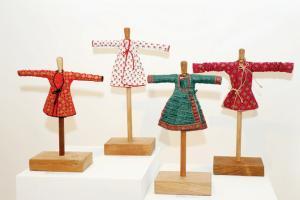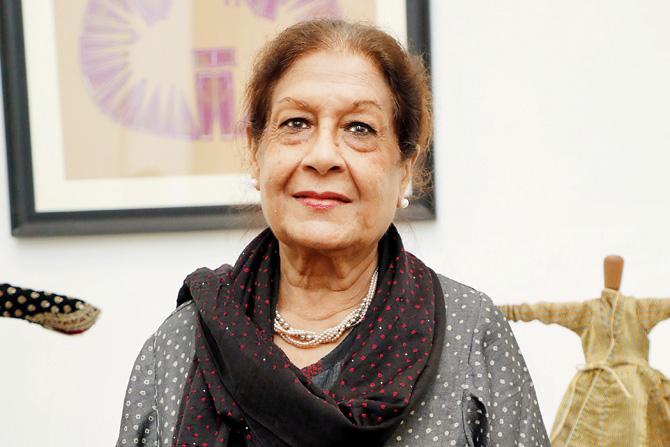Get a glimpse into the world of Indian royalty through detailed miniatures of their attires

.
On October 1 at the Dr Bhau Daji Lad Museum, textile artist Geeta Khandelwal celebrated her 80th birthday, cheerfully doing a pre-walk-through of her exhibition Classic Miniature Costumes inspired from ceremonial and everyday attires of the Maharajas of India from 1850 to 1950. This has been her passion project for the last three years, wherein she has meticulously recreated miniature garments of ceremonial and everyday attires of Indian maharajas—from the mid-19th to the mid-20th century. Traditionally, while holding courts, the maharajas had enjoyed dressing up in all their finery, displaying their status and prosperity.
Khandelwal, who has been working in the field of textile art for over 50 years says that "these recreations are based on references drawn from Ahmedabad's Calico Museum's publication Indian Costumes in the Collection of the Calico Museum of Textiles. The book includes detailed patterns which give measurements and show individual sections of the garments they wore, the types of fabrics used, the colours, the details of embroidery, pipings, buttons and ties, sleeves and collars—all well documented and illustrated. The images were about 4 inches and I have blown them into miniatures of about 7 to 10 inches. The project was never meant for an exhibition but when the director of Bhau Daji Lad Museum saw the work, she thought it was important to display it to educate the next generation on the how these garments can be made."
ADVERTISEMENT

Geeta Khandelwal (above) has used vintage fabrics from her personal collection to create these imiature costumes
Indian costumes is a vast subject that includes rich brocaded silks and velvets and finely woven cotton, demonstrating the range of materials and weaving techniques prevalent in the country and embellishments come in the form of intricate embroidery, beads or semi-precious stones. Following the patterns available in the book, Khandelwal has recreated male outfits like jamas, angarkhas and sherwanis.
Each miniature garment has been hand-stitched, in collaboration with master tailors and embroiderers and she's used vintage fabrics from her personal collection, which reflect the diversity of the Indian materials in use since the early 19th century. These include silks and brocades of Varanasi, hand-block prints of Gujarat and Rajasthan, fine muslin of Bengal, pashmina jamavar of Kashmir.

Not much has survived in the shape of actual costumes; Indian climate makes it difficult to preserve textiles. But historical visuals, in the form of paintings and sculpture allow a peek to study the rich variety of costumes that existed. In some cases, we are fortunate that the older textile traditions have persisted, showing the continuation in techniques of production.
What: Classic Miniature Costumes: Inspired from ceremonial and everyday attires of the Maharajas of India from 1850 to 1950 by textile artist Geeta Khandelwal
When: On view till October 28
Where: The Kamalnayan Bajaj Special Exhibitions Gallery Dr. Bhau Daji Lad Mumbai City Museum, Byculla East. 10 AM to 6 PM
Contact: 23731234
Catch up on all the latest Mumbai news, crime news, current affairs, and also a complete guide on Mumbai from food to things to do and events across the city here. Also download the new mid-day Android and iOS apps to get latest updates
 Subscribe today by clicking the link and stay updated with the latest news!" Click here!
Subscribe today by clicking the link and stay updated with the latest news!" Click here!







